We get it—tossing everything into the fridge feels like the easiest way to keep food fresh. But here’s the catch: some of your go-to groceries don’t belong there at all. In fact, chilling certain staples can backfire by dulling flavors, ruining textures, and speeding up spoilage. From mushy tomatoes to gritty chocolate, these everyday items are often victims of over-refrigeration. If you’re unknowingly sabotaging your ingredients, you’re not alone. Let’s set the record straight—these 8 foods are better off staying out in the open. Save your fridge space and preserve taste with a few smart storage swaps.
1. Tomatoes

Fresh tomatoes suffer a flavor catastrophe in the cold. When placed in refrigerator temperatures below 55°F, the flavor-producing enzymes shut down completely, never to return. The cold environment also damages the delicate internal membranes, creating that mealy, disappointing texture we all dislike. Store your tomatoes stem-side down on the counter instead, where they’ll continue to ripen naturally and maintain their sweet-acidic balance. Green tomatoes will gradually redden at room temperature, developing their full flavor potential. Fun fact: Tomatoes are technically berries and contain more genes than humans! For already-sliced tomatoes, refrigeration becomes necessary, but try to bring them to room temperature before eating to revive some flavor.
2. Bread

Contrary to popular belief, refrigerating bread actually speeds up the staling process. Cold temperatures force the starch molecules to recrystallize more rapidly than at room temperature, creating that tough, dry texture nobody enjoys. Your once-soft sandwich bread transforms into a disappointing brick within days.
A bread box or paper bag on the counter keeps bread fresh for 2-3 days. For longer storage, freezing works remarkably well – the rapid freezing process prevents starch recrystallization. When you’re ready to eat frozen bread, thaw it at room temperature or toast it directly from frozen. This method preserves both texture and flavor far better than the refrigerator ever could.
3. Potatoes
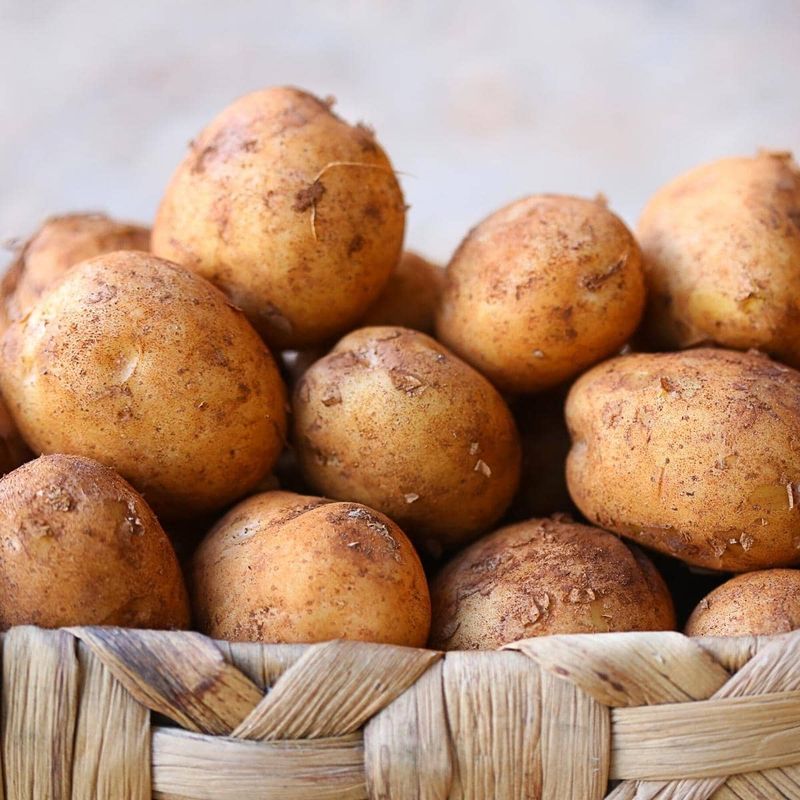
The humble potato undergoes a concerning transformation when refrigerated. Cold temperatures trigger potato starches to convert into sugars, creating an oddly sweet flavor profile that most recipes don’t account for. Even worse, these excess sugars can produce potentially harmful acrylamide compounds when the potatoes are later fried or roasted at high temperatures.
The ideal storage spot for potatoes is a cool, dark place with good air circulation. A basket in the pantry or a paper bag in a cabinet works perfectly. Keep potatoes away from onions during storage – they release gases that cause each other to spoil faster. With proper room-temperature storage, potatoes remain firm and flavorful for weeks, ready for mashing, baking, or frying.
4. Onions
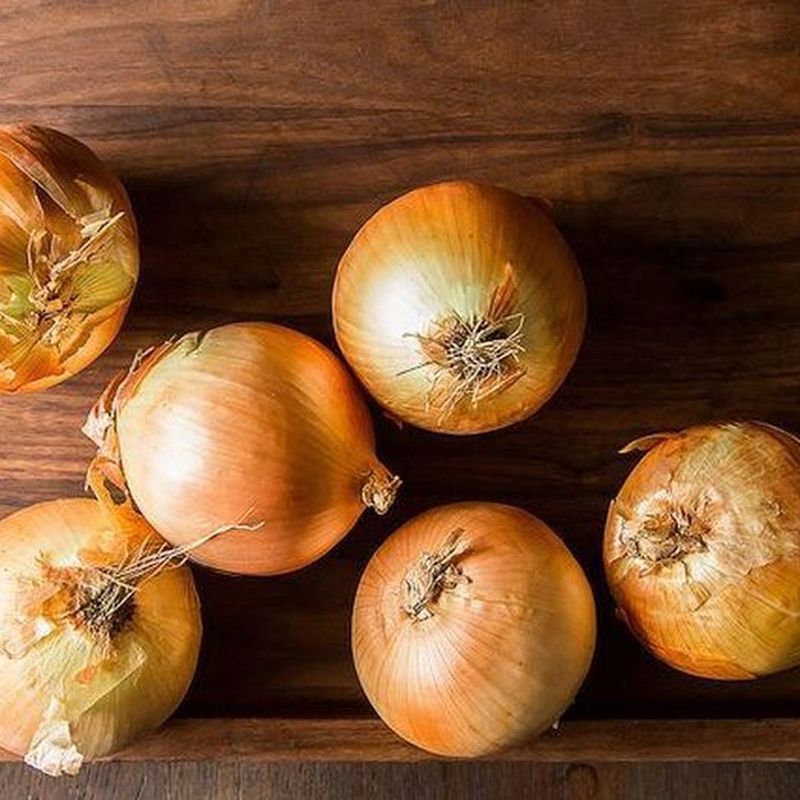
Crisp, pungent onions quickly surrender their desirable qualities in the refrigerator’s humid environment. The moisture promotes premature sprouting, accelerates mold growth, and creates soft spots that spread rapidly through the entire onion. Before you know it, your firm cooking essential has transformed into a mushy, unusable mess. Onions thrive in dry, well-ventilated spaces away from direct sunlight. Mesh bags, open baskets, or even repurposed pantyhose allow air circulation while preventing moisture buildup. One exception exists: once an onion is cut, the exposed surface should be refrigerated in an airtight container to prevent bacterial growth. Even then, use these refrigerated cut onions within 2-3 days for best quality and food safety.
5. Garlic
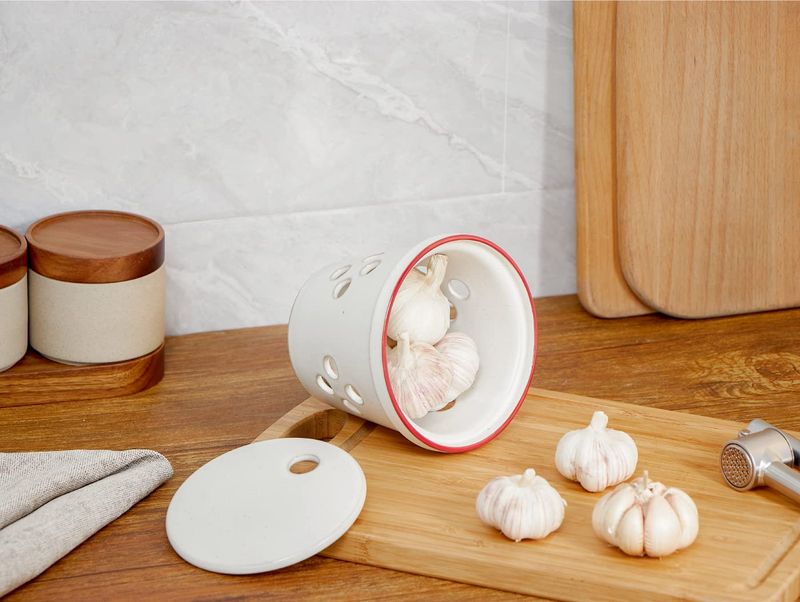
That bulb of garlic you’ve been refrigerating is quietly deteriorating in both flavor and texture. Cold, humid conditions encourage premature sprouting, which channels the garlic’s energy into growing green shoots rather than maintaining its signature pungent taste. The refrigerator’s moisture also creates the perfect environment for mold growth between the cloves.
Garlic cloves store beautifully at room temperature in a dry, ventilated container like a terra cotta garlic keeper or simple mesh bag. This environment preserves their firm texture and bold flavor for up to three months. The telltale sign of properly stored garlic is its firmness – each clove should feel solid when squeezed. Once garlic becomes soft or shows visible sprouting, its flavor compounds have significantly diminished.
6. Honey
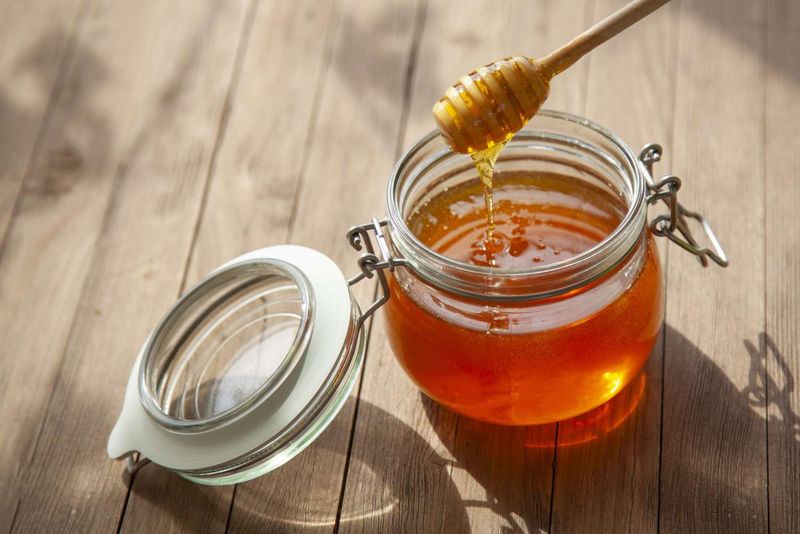
Golden, flowing honey transforms into a grainy, solid mass when refrigerated – a completely unnecessary change for this naturally shelf-stable food. The cold temperatures accelerate crystallization by causing sugar molecules to separate from water, creating that familiar hardened texture that makes honey difficult to pour or spread. Nature designed honey to last indefinitely without refrigeration. Its low moisture content and natural antimicrobial properties prevent spoilage at room temperature. Store honey in a tightly sealed container in the pantry or cabinet, away from direct heat sources. If crystallization occurs, simply place the honey jar in warm water for 10-15 minutes to restore its smooth, pourable consistency. Archaeological discoveries have found 3,000-year-old honey in Egyptian tombs that remains perfectly edible!
7. Chocolate
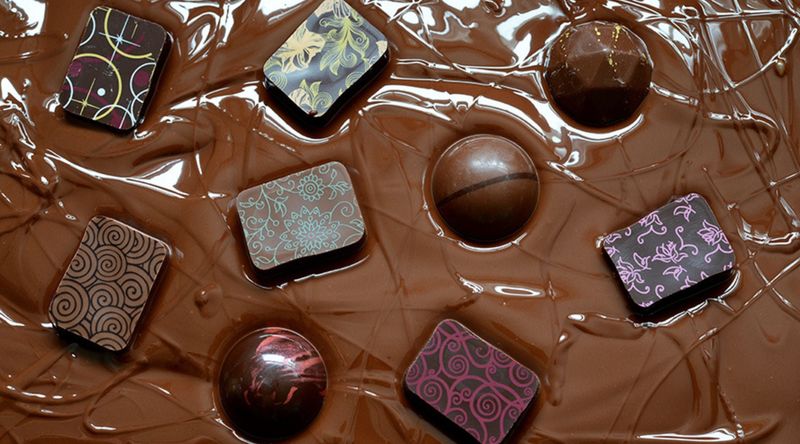
The white, chalky appearance on refrigerated chocolate isn’t mold – it’s either sugar bloom or fat bloom caused by condensation and temperature fluctuations. When cold chocolate is exposed to warmer air, moisture collects on the surface, dissolving surface sugars that recrystallize as white patches when the moisture evaporates. Beyond appearance, refrigeration damages chocolate’s carefully crafted texture and flavor profile.
The cocoa butter hardens differently at cold temperatures, changing how it melts in your mouth. Store chocolate in a cool, dry place between 65-70°F, wrapped tightly to protect it from odors and humidity. A cabinet away from the stove works perfectly. Premium chocolate contains stabilizers that help it remain shelf-stable for months when properly stored, allowing you to enjoy its complex flavors as the chocolatier intended.
8. Bananas
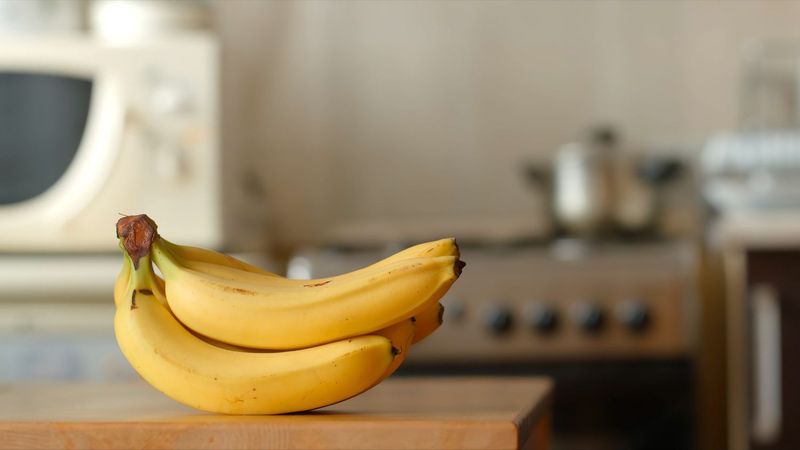
The refrigerator plays a cruel trick on bananas – it darkens their peels while halting the natural ripening process. Cold temperatures damage the cell walls in banana peels, causing them to release enzymes that create those unappetizing black spots. Meanwhile, the fruit inside stops ripening but continues degrading in texture. Counter storage allows bananas to ripen properly, developing their full sweetness and soft texture. For perfectly yellow bananas with brown freckles, store them at room temperature away from other fruits. Got too many ripe bananas? Rather than refrigerating, peel and freeze them for smoothies or baking. The freezer preserves their flavor and creamy texture far better than the refrigerator. If you must slow ripening, separate bananas from the bunch – they release ripening ethylene gas through their stems.
Leave a comment